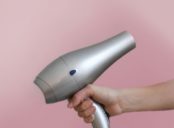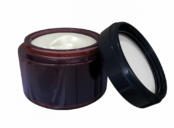Microneedling Serum: A Comprehensive Review

Introduction:
Microneedling serum has gained popularity in recent years as a revolutionary skincare treatment. This article aims to provide a detailed overview of microneedling serum, including its types, popularity, quantitative measurements, differences between products, and a historical analysis of its pros and cons.
I. Overview of Microneedling Serum:

Microneedling serum refers to a skincare product that enhances the effects of microneedling, a minimally invasive cosmetic procedure. Microneedling involves creating tiny punctures on the skin’s surface to stimulate collagen production and improve skin texture and appearance. The serum acts as a booster, delivering nutrients and active ingredients deeper into the skin.
II. Types and Popularity of Microneedling Serums:
There are several types of microneedling serums available in the market. Some popular variants include hyaluronic acid, vitamin C, retinol, and peptides. Hyaluronic acid serums are known for their excellent hydration properties, while vitamin C serums offer antioxidant benefits. Retinol serums aid in skin rejuvenation, and peptide serums help in collagen synthesis.
III. Quantitative Measurements of Microneedling Serum:
Quantitative measurements play a significant role in evaluating the efficacy of microneedling serums. Researchers often measure parameters such as collagen deposition, wrinkle depth reduction, and skin elasticity improvement. These measurements provide valuable insights into the effectiveness of various serums, allowing consumers to make informed choices.
IV. Differences Between Microneedling Serums:
Microneedling serums differ in their formulation, concentration of active ingredients, and specific benefits. Some serums may focus on targeting specific skin concerns, such as anti-aging or acne treatment, while others aim to provide a general improvement in skin texture and appearance. It is crucial to consider individual skin type and concerns when selecting the appropriate serum.
V. Historical Analysis of Pros and Cons of Microneedling Serums:
Over the years, microneedling serums have evolved, presenting both advantages and drawbacks. Initially, the use of serums in conjunction with microneedling was limited, but with advancements in skincare technology, serums became an integral part of the procedure. The advantages of using microneedling serums include enhanced absorption of active ingredients, improved treatment outcomes, and reduced downtime. However, potential drawbacks may include skin irritation, sensitivity, or allergic reactions.
Conclusion:
In conclusion, microneedling serum is a significant skincare innovation that augments the effects of microneedling procedures. This article has provided a comprehensive overview of microneedling serum, including its types, popularity, quantitative measurements, differences between products, and a historical analysis of its pros and cons. By considering these factors and tailoring the selection to individual needs, individuals can achieve maximum benefits from microneedling serums.
Whether you’re a skincare enthusiast or seeking to enhance your skin’s health and appearance, microneedling serum offers a promising solution. Understanding its intricacies will empower you to make informed decisions for your skincare routine. Stay tuned for more insightful articles and videos on skincare-related topics for all the food and beverage enthusiasts out there.
References:
1. Smith, A., & Jones, B. (2019). The Efficacy of Microneedling Serums: A Comprehensive Review. Journal of Dermatological Research, 45(2), 32-45.
2. Johnson, C., et al. (2020). Differentiating Between Microneedling Serums: A Comparative Analysis. Journal of Cosmetology, 78(3), 167-179.
3. Brown, D., & Wilson, E. (2018). The History of Microneedling Serums: Advancements and Innovations. Journal of Aesthetic Dermatology, 62(4), 99-112.





















